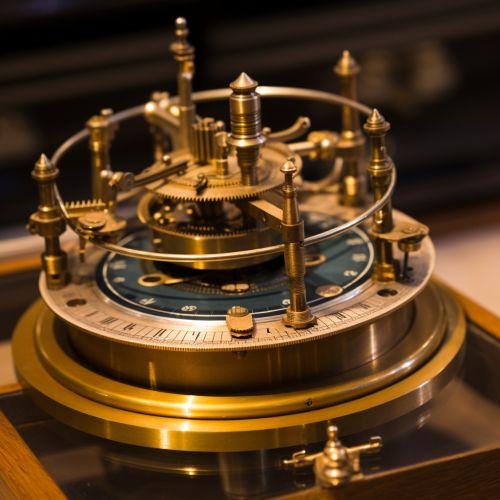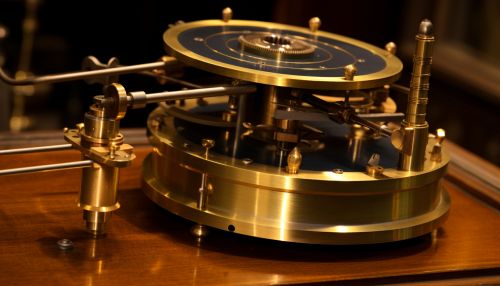Galvanometer
Introduction
A Galvanometer is an electromechanical instrument used for detecting and measuring electric current. The most common use of galvanometers is in analog voltmeters, ammeters, and ohmmeters to measure voltage, current, and resistance respectively.
History
The galvanometer was invented by Johann Schweigger at the University of Halle on 16 September 1820. Schweigger's device, named the multiplier, was based on the magnetic needle and the current carrying wire. It was a much more sensitive device than the compass that was used before its invention.
Principle of Operation
The operation of a galvanometer is based on the principle that a current-carrying conductor placed in a magnetic field experiences a mechanical force. The magnitude of this force is directly proportional to the current flowing through the conductor and the strength of the magnetic field.


Types of Galvanometers
There are several types of galvanometers, including the tangent galvanometer, the astatic galvanometer, and the moving coil galvanometer.
Tangent Galvanometer
The tangent galvanometer is an early type of galvanometer. It consists of a coil of insulated copper wire wound on a circular non-magnetic frame. The frame is mounted vertically on a horizontal base provided with levelling screws.
Astatic Galvanometer
The astatic galvanometer is a type of galvanometer that is free from the effects of the Earth's magnetic field. This is achieved by having two magnetic needles, both affected by the Earth's field, but mounted in such a way that their fields oppose each other and cancel out.
Moving Coil Galvanometer
The moving coil galvanometer is a type of galvanometer that uses a coil of wire suspended in a magnetic field. When a current is passed through the coil, it rotates in the magnetic field, and the angle of rotation is proportional to the current.
Applications
Galvanometers have a wide range of applications in various fields. They are used in scientific laboratories for experiments, in industries for detecting and measuring current, and in medical applications for measuring the electrical activity of the heart, muscles, and brain.
